Infographic: Pain Management Treatment and Care
In September of 2019, Health Union (the parent company of COPD.net) partnered with the US Pain Foundation for our first ever Chronic Pain in America survey to ask members of our communities about their experiences with chronic pain. 4,725 people living with chronic pain completed the survey to share how pain impacts their life and their experiences with pain management and treatment.
When it comes to pain management, many people regularly see a healthcare provider, yet pain management and treatment effectiveness are thought to be low. There are things that they wish their doctor knew and better understood about their pain and there are also regrets about how they’ve handled the pain themselves.
Are doctors used for pain management?
When it comes to pain management, 85 percent of respondents regularly see a healthcare provider. Primary care physicians and pain specialists were the most common doctors seen for pain management. About half agree with their provider about their level of pain and discuss side effects and addiction risks with their doctor.
For those not seeing a doctor for their pain, reasons include:
- lack of satisfaction with previous providers
- cost
- lack of insurance
- feeling like their pain is controlled or well-managed on their own
I wish my doctor knew…
There were a range of responses on what people wish their doctor knew about their pain. Some people felt misunderstood when it comes to the level of pain they are experiencing. They want their doctor to know how excruciating and debilitating the pain can be. Others discussed the emotional side of the pain. They want their doctor to know how much the pain impacts their quality of life and that it goes far beyond the physical effects of pain.
Treatment for chronic pain
There are a variety of options that are used to manage pain, both prescription and over the counter. But unfortunately, only 14* percent feel their pain is well managed on their current treatment plan. There are also barriers to accessing or switching medications. Some alternative treatments are used, with spirituality, heat therapy, changes in diet, and exercise being the most common options.
Treatment side effects
For those who are no longer taking pain medication or who have switched medications, the biggest reasons are that it wasn’t working (37 percent) and that they experienced side effects (31 percent).
The most common side effects of pain medication are:
- constipation
- drowsiness
- feeling “loopy"
Other side effects include:
- dizziness
- nausea or vomiting
- insomnia
- bloating
- GERD
- mood swings
- depression
Regrets and wishes in regards to pain management
When looking back, many are filled with disappointment about how they managed their pain. Regrets ranged from wishing they had asked for help sooner to sharing that they should have advocated better for themselves and been more proactive about getting help early on. Others wish they had tried lifestyle changes and alternative therapies first before seeking treatment for pain.
The Chronic Pain in America 2019 survey was conducted online from mid-September through mid-October of 2019. 4,725 respondents were recruited from Health Union’s Community channels, as well as the US Pain Foundation’s member touchpoints.


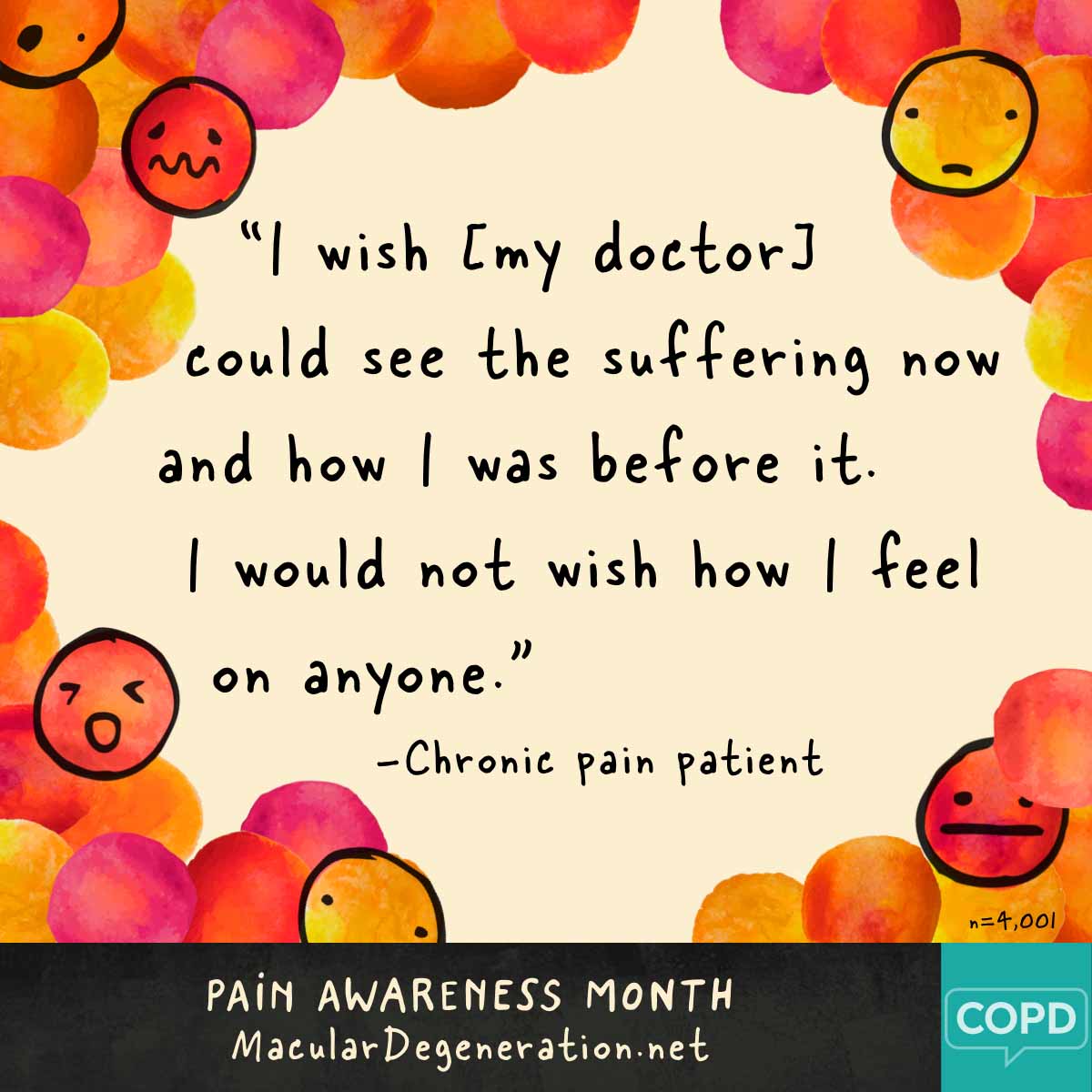
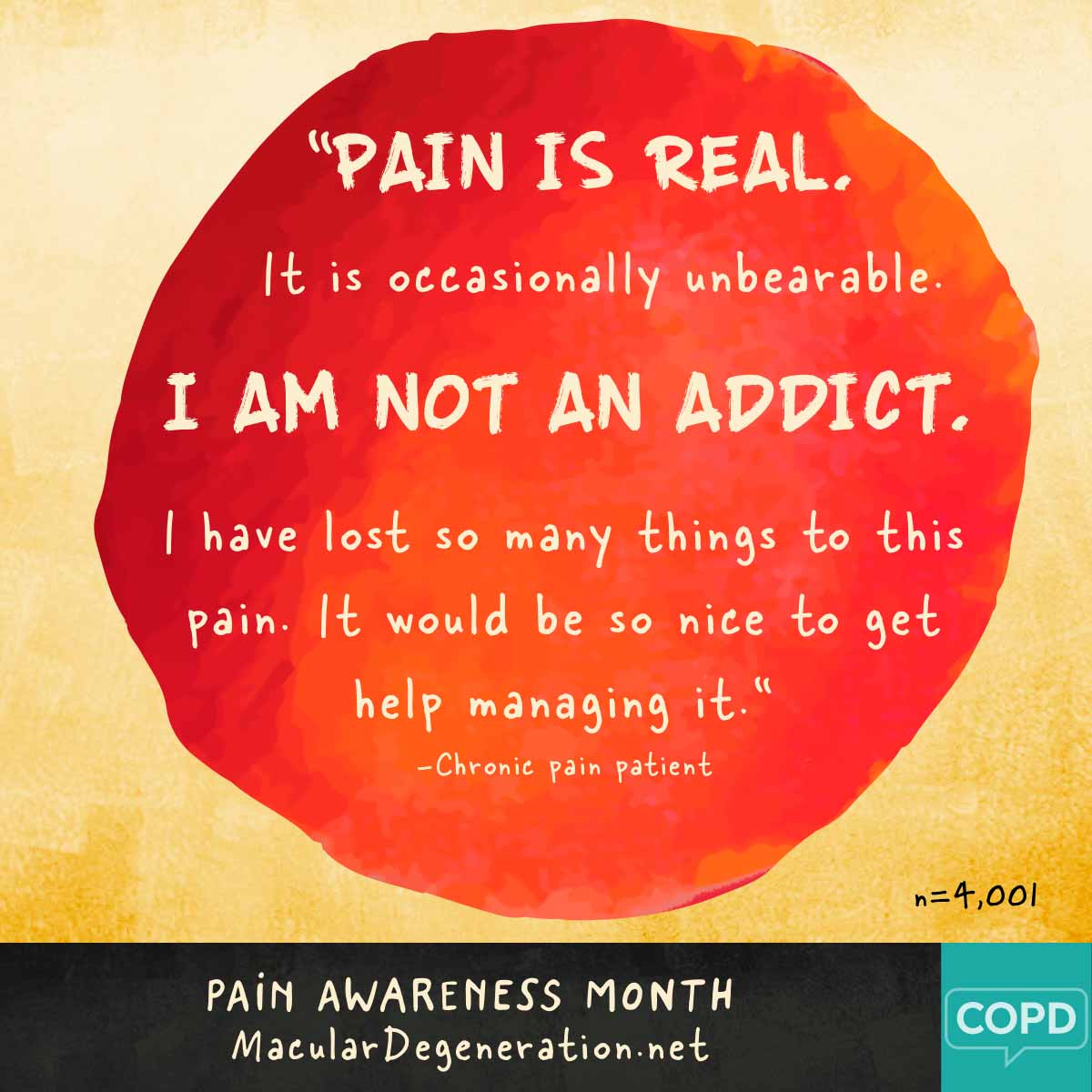
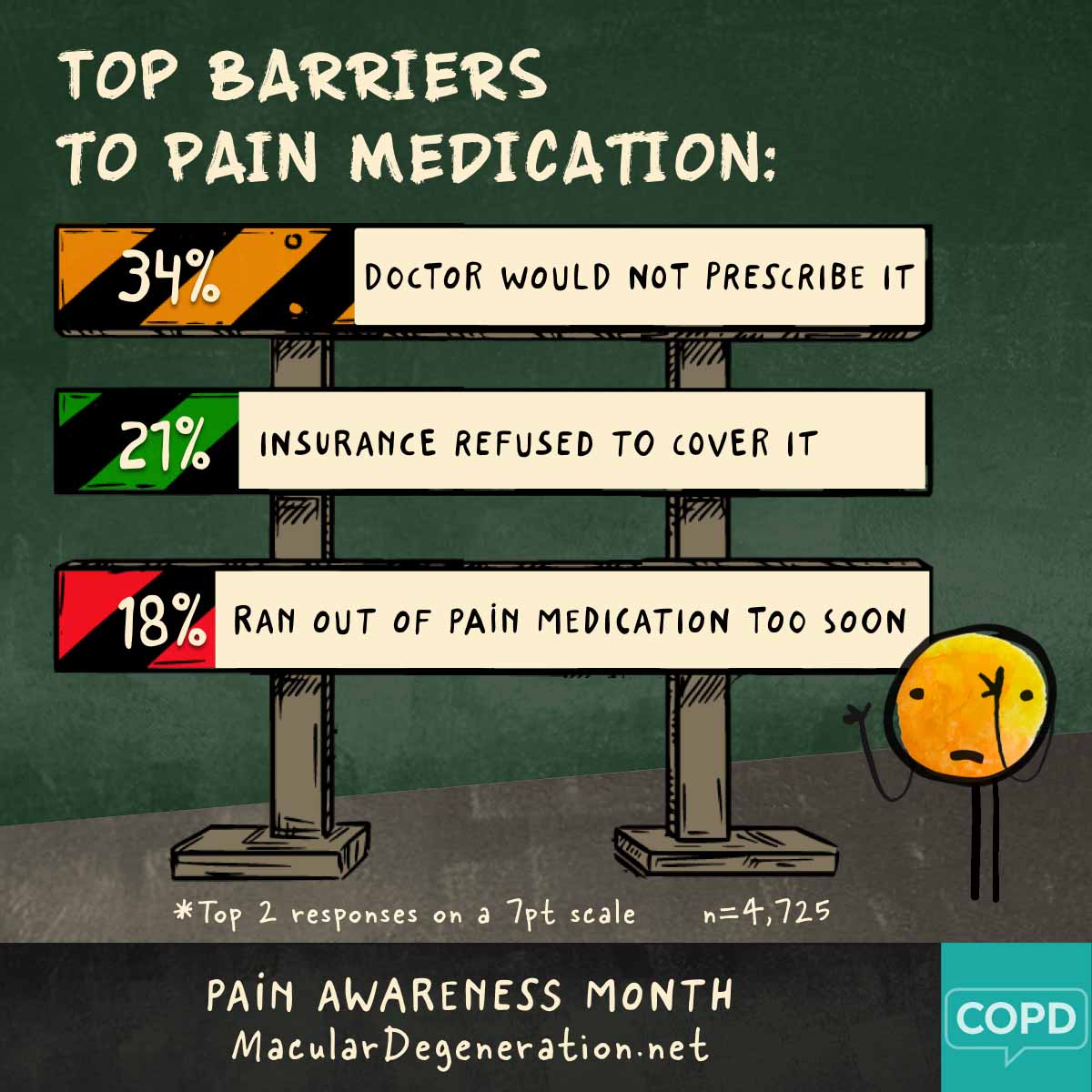
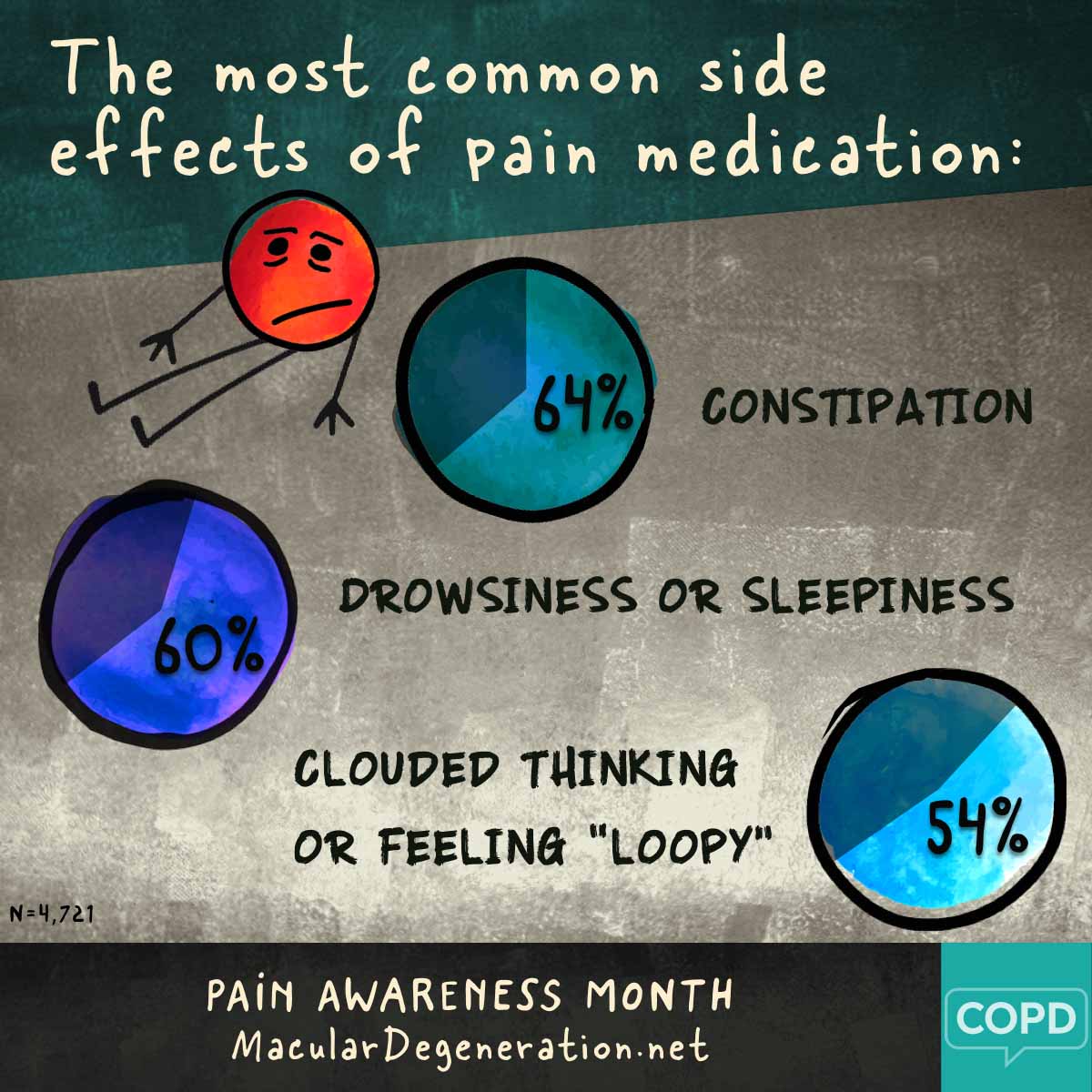
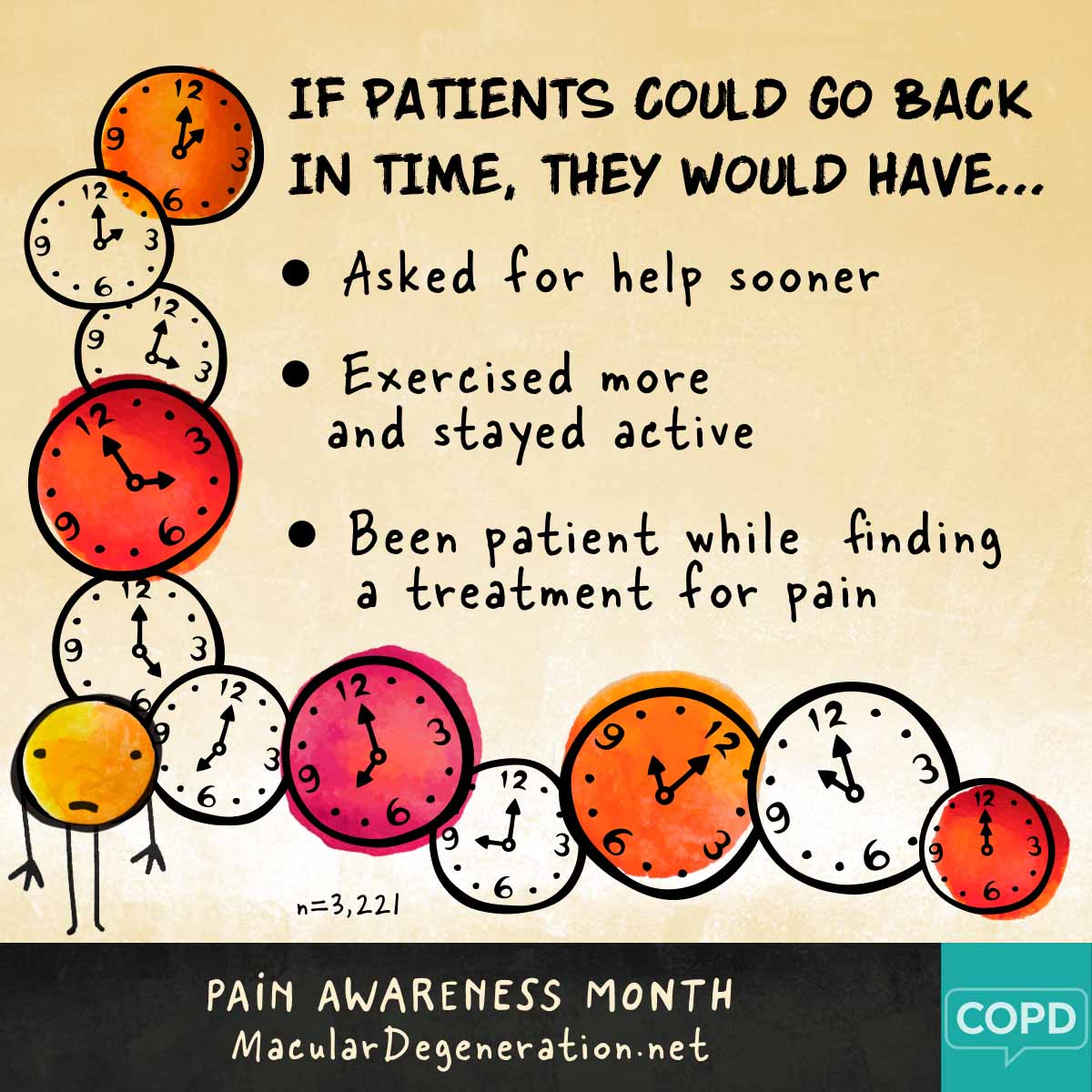
Join the conversation